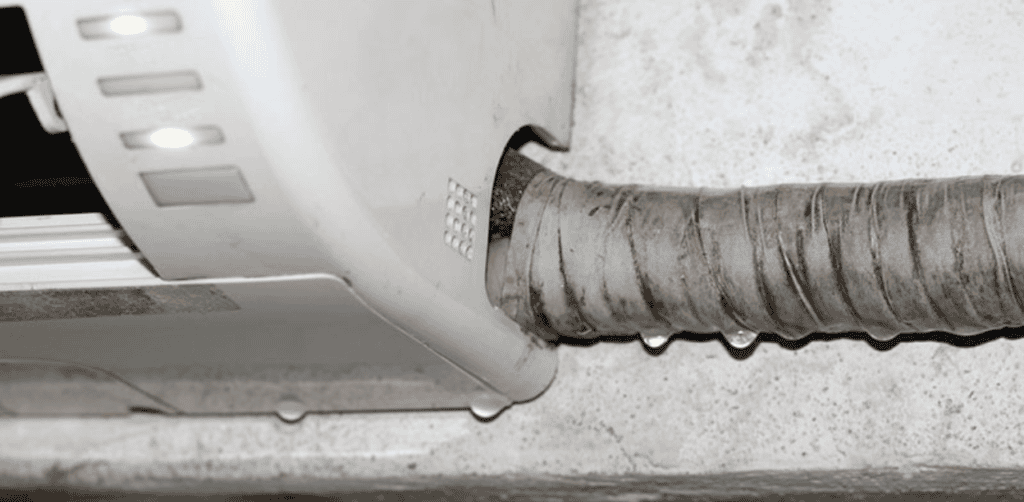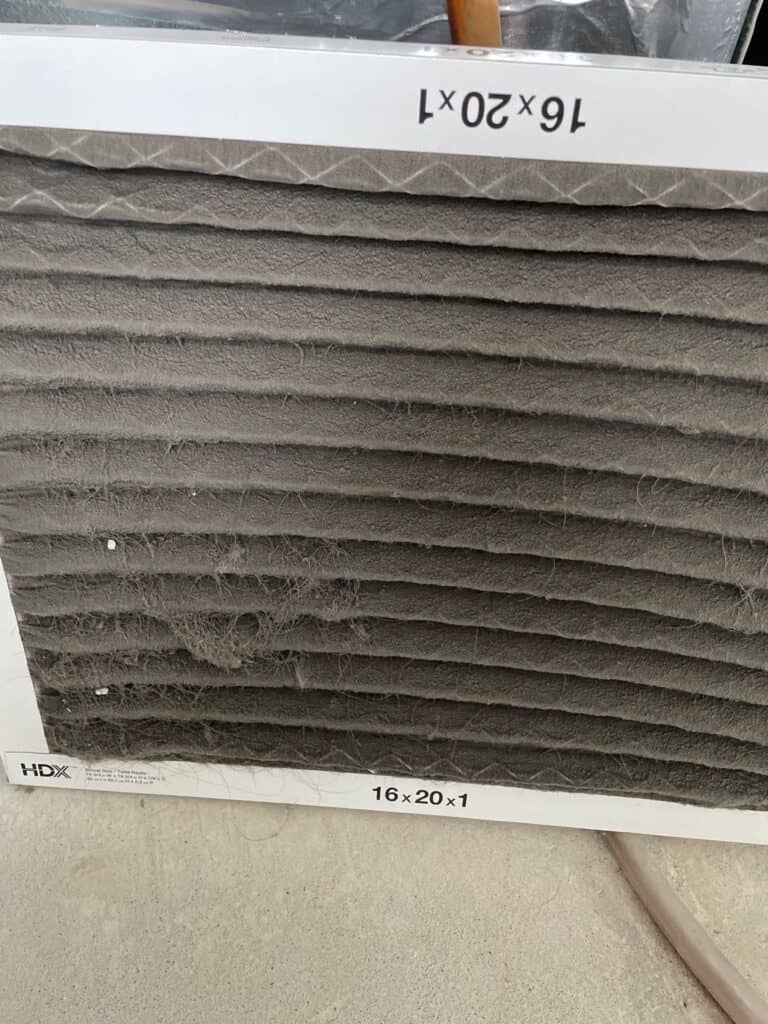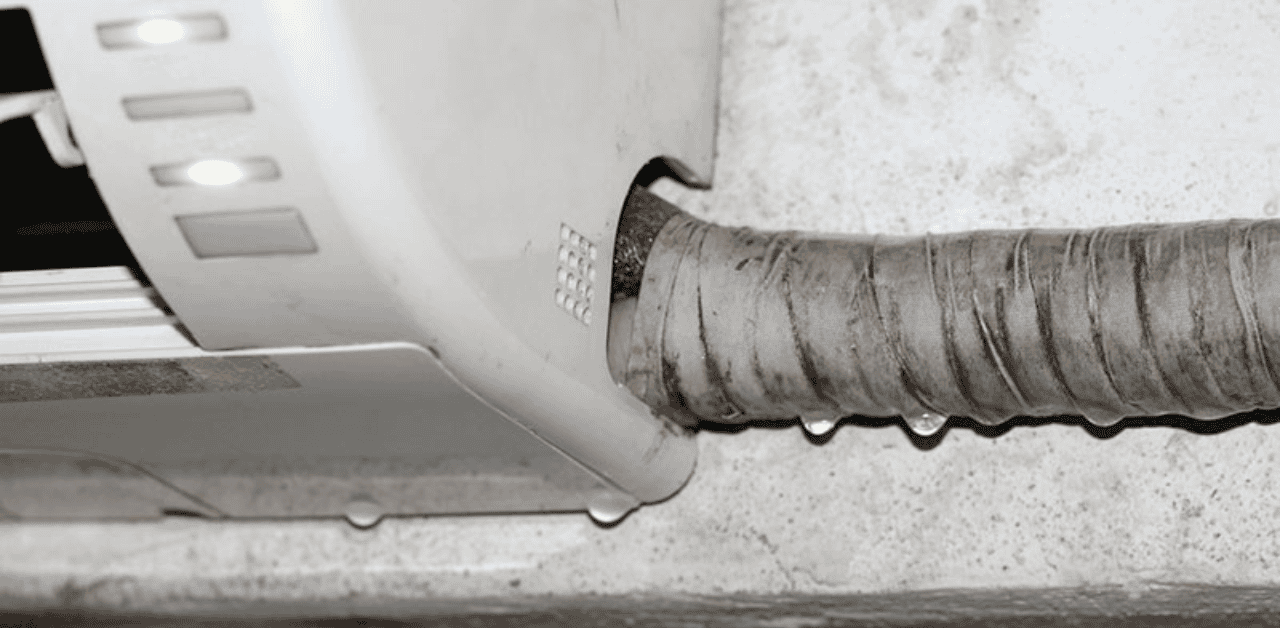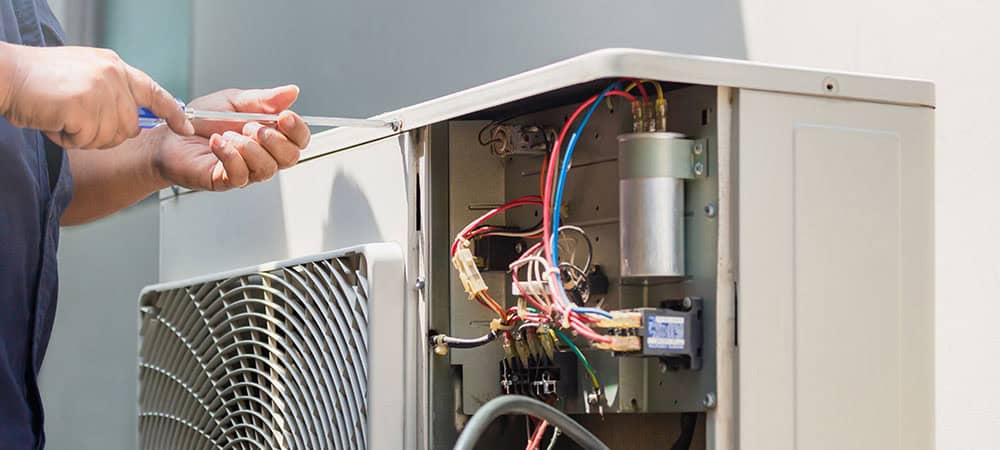To fix a leaking air conditioner, first find where the leak is coming from. Look for blockages in the drain line and clean it with a wet/dry vacuum and vinegar mix. Check the air filter and replace it if it’s dirty. If the leak persists after these steps, it’s advisable to consult with professionals who specialize in air conditioner repair services, as there may be more complex underlying issues at play. Additionally, regular maintenance can prevent leaks from occurring in the first place, ensuring your system operates efficiently. Always consider signing up for an annual service plan to keep your air conditioner in top condition.
Gently clean the evaporator coil with a brush or special cleaner. Look at the condensate pump to see if it’s working right, and clean or replace it if needed. Also, check the drain pan for cracks or overflow problems.
Regular upkeep, including having a pro check it twice a year, can stop future leaks. By doing these steps, you can fix most AC leaking issues and keep your unit working well.
Key Takeaways
- Find where the leak is coming from by looking at the drain pipe, cooling parts, drip tray, and where air ducts connect.
- Clean out the water drain pipe using a wet/dry vacuum. Then, flush it with vinegar mixed with water to get rid of any clogs.
- Look at the air filter and change it if it’s dirty or blocked. This helps air flow properly and stops leaks.
- Check the cooling coil and clean it. Remove any bits and pieces, and use a special cleaner for tough dirt.
- Look at the water pump to see if it’s working right. Clean it well and test it to make sure it’s draining water properly.
Understanding the Causes of AC Water Leaks

Air conditioner leaks usually come from four main causes: blocked water drains, frozen cooling coils, damaged water pans, or poor setup.
A blocked water drain is the most common problem. When stuff builds up, it stops water from flowing properly, causing overflow.
Frozen cooling coils happen when your AC runs non-stop in damp air, making ice form. As the ice melts, it’s too much for the water pan to handle.
Damaged water pans can get rusty or crack, letting water escape.
Poor setup can lead to parts not lining up right or not being sealed well, causing leaks.
To find the cause, look at your water drain for blockages, check the cooling coil for ice, look at the water pan for damage, and make sure all parts are set up right and sealed well. Knowing these causes will help you figure out and fix your AC leak.
Identifying the Source of the Leak
To find where your AC is leaking, you need to check four main areas:
- the drain line
- cooling coils
- drip pan
- air duct connections
First, look at the drain line for blockages or damage. If it’s clogged, water can back up and spill out.
Next, check the cooling coils for ice or damage, which can cause too much water to form.
Look at the drip pan for cracks or overflowing. If you have a water pump, make sure it’s working right and the float switch isn’t stuck.
Lastly, check the air duct connections for gaps or loose parts that might let water escape.
Cleaning the Condensate Drain Line
To clean your AC’s condensate drain line, first find where you can get to it. This is usually close to the indoor part of your AC.
Once you’ve found it, use a vacuum that can handle both wet and dry stuff to get rid of any blockages or junk in the line.
After you’ve vacuumed, pour a mix of vinegar and water through the drain line. This will clear out any leftover gunk and help stop future clogs.
Locating the access point
The condensate drain line access point is usually near the indoor air handler unit. You might find it in a closet, attic, or basement.
For central air conditioning systems, it often looks like a T-shaped pipe or a small cap you can remove on the main drain line. It’s important to find the right access point so you don’t harm other parts of your HVAC system.
Look for a PVC pipe about 2 centimetres wide. It runs from your air handler to the outside of your home. The access point is usually within a metre of the air handler.
If you can’t find it easily, check your system’s manual or ask a professional for help. Once you’ve found the access point, you can start cleaning the condensate drain line to fix your air conditioner’s leaking problem.
Using a wet/dry vacuum
Once you find the opening, a wet/dry vacuum can clear blockages in your condensate drain line. Take off the drain line cap and attach the vacuum hose tightly to the opening. Make sure it’s sealed well to get the best suction. Turn your vacuum to its highest setting and run it for 30-60 seconds. This should remove any gunk or algae causing the clog.
For tough blockages, switch between vacuuming and rinsing with warm water. Keep doing this until water flows easily through the pipe. If you can’t unclog the line this way, you might need to use a plumber’s snake or call an expert.
After you’ve vacuumed the drain line successfully, put the cap back on tightly. Cleaning the line regularly like this can stop future leaks and keep your AC working well.
Flushing with vinegar solution
A vinegar mix is a good, cheap way to clean and disinfect your AC’s drain line.
To clear the drain pan and line, follow these steps:
- Mix equal parts white vinegar and warm water in a container.
- Find the opening near your indoor unit’s drain pan.
- Slowly pour the mix into the drain line, letting it flow through.
This helps break down any gunk and kill germs that might be causing clogs. After pouring the mix, run clean water through the line to rinse it well. You’ll know it’s working when you see water flowing freely from the outdoor drain pipe.
If the clog doesn’t clear, you might need a stronger cleaner or help from a pro. Cleaning with this vinegar mix regularly can stop future blockages and keep your AC working well.
Checking and Replacing the Air Filter

To fix a leaky air conditioner, start by looking at the air filter. A blocked filter can make water build up and cause leaks. Find the filter, usually in the air duct or blower area. Take it out carefully and hold it up to a light. If you can’t see light through it, you need a new one.
A dirty filter stops air from flowing well, which can make the evaporator coil freeze and then melt, causing water to collect. When you replace the filter, make sure you get the right size and type. Put the new filter in place, following the arrows that show which way the air should flow.
Remember to check your filter every one to three months, depending on how much you use it and what your home is like. This will help stop future leaks and keep your air conditioner working well.
Inspecting and Cleaning the Evaporator Coil
Turn off the power to your air conditioner before you start. This keeps you safe.
Take off the cover panel to see the evaporator coil. Clean it gently with a soft brush or vacuum. Be careful not to hurt the thin metal fins.
If you see lots of dirt or mould, or if you’re not sure what to do, it’s best to call an HVAC expert. They know how to clean it properly.
Safety precautions
Safety is very important when checking and cleaning your air conditioner’s evaporator coil. To stay safe and avoid getting hurt, follow these steps:
- Turn off the power to your AC unit at the circuit breaker before you start.
- Wear safety gear like glasses, gloves, and a dust mask.
- Make sure the work area has good air flow so you don’t breathe in bad fumes.
Be careful when handling the evaporator coil because it has sharp edges that can cut you. Don’t use too much force or rough materials that might harm the delicate fins. If you use chemical cleaners, follow the instructions carefully and never mix different cleaning products. Some coil cleaners can be harmful and may need to be neutralized after use.
If you’re not sure about any part of the process or run into problems, ask a professional HVAC technician for help. A qualified technician can diagnose issues effectively and offer solutions to ensure your system is running smoothly. Be on the lookout for low refrigerant level symptoms, which may include reduced cooling efficiency or ice formation on the coils. Addressing these problems early can prevent costly repairs down the line and keep your HVAC system in optimal condition. Additionally, be aware that neglecting regular maintenance can lead to several issues that contribute to system failure. Understanding the causes of an ac freezing up can help you take preventative measures, such as ensuring proper airflow and checking filter cleanliness. By staying proactive, you can maintain your comfort and avoid unexpected breakdowns during peak usage periods. In the event of troubleshooting unresponsive air conditioning, it’s critical to first check the thermostat settings and ensure that the circuit breaker hasn’t tripped. If these initial steps don’t resolve the issue, further investigation may be needed to identify any electrical or mechanical faults within the system. Regularly monitoring your HVAC system not only enhances efficiency but also extends its lifespan, ultimately providing you with reliable comfort. Additionally, it’s essential to educate yourself about the common causes of freezing air conditioners, as this knowledge can empower you to tackle minor issues before they escalate. Seasonal changes can impact your system’s performance, so adjusting maintenance schedules accordingly is crucial. By being informed and attentive to your HVAC system’s needs, you can enhance its longevity and efficiency, ensuring uninterrupted comfort throughout the year.
Cleaning process
To clean your air conditioner’s evaporator coil, you’ll need to find it inside the air handler or furnace plenum.
Look at the coil carefully to see if it’s dirty or has mould. If you spot grime, it’s time to clean.
Use a soft brush or vacuum to remove loose bits. For tough dirt, use a special coil cleaner and follow the instructions on the bottle. Let the cleaner sit for a while, then rinse it off with clean water.
While you’re cleaning, check for any damage. If you see problems, it’s best to call an expert.
Make sure the coil is completely dry before putting everything back together.
Cleaning and checking the evaporator coil often can stop leaks and keep your air conditioner working well.
When to call a professional
While cleaning the evaporator coil is often a task you can do yourself, sometimes it’s best to call a pro. Contact an HVAC technician if:
- You see leaks that won’t stop after cleaning
- The coil or nearby parts look damaged
- You don’t have the right tools or know-how to check things properly
A pro can find hidden leaks and fix problems you mightn’t see. They’ve the skills to handle tricky repairs, like fixing coolant leaks or swapping out broken parts.
Also, if you think water from your leaky AC has damaged your home’s structure or wiring, call a pro right away. They can check how bad the damage is and tell you how to fix it.
Examining the Condensate Pump
Look at the condensate pump for signs it’s not working right or is blocked. This pump often causes air conditioner leaks. Find the pump near the indoor unit or in the attic. Check if it has power and works properly. Listen for odd noises or shaking that might mean there’s a problem. Look at the pump’s container for cracks or damage.
Test the overflow switch by lifting the float by hand. If it doesn’t turn on, you might need to replace it. Clean the pump and the area around it. Remove any stuff that could block the drainage. Make sure the drain line is clear and hooked up right. If you see algae growing, clean it with watered-down bleach.
Pour water into the drain pan to check if the pump turns on and moves water well. If problems keep happening, think about getting a new condensate pump.
Preventive Measures and Regular Maintenance
Regular upkeep is key to stop air conditioner leaks and keep it working well. Taking steps to prevent problems and getting yearly check-ups can really lower the chance of leaks and make your AC last longer.
- Clean or change air filters every month
- Get a pro to check your AC twice a year
- Keep the water drain pipe clear of junk
During check-ups, experts will look for worn-out parts, clean coils, and make sure there’s enough coolant. They’ll also check the water pump and drain for blocks or damage. By sticking to a good upkeep plan, you’ll have fewer leaks and catch problems before they get big. Remember, it’s cheaper to prevent issues than to fix them. Make sure to keep up with your AC’s care to keep it running well and free of leaks.

ALPCare Maintenance Plans
Protection All Year-Round.
Experience Perfect Temperatures in Every Season — Affordably.
Explore Our Plans







